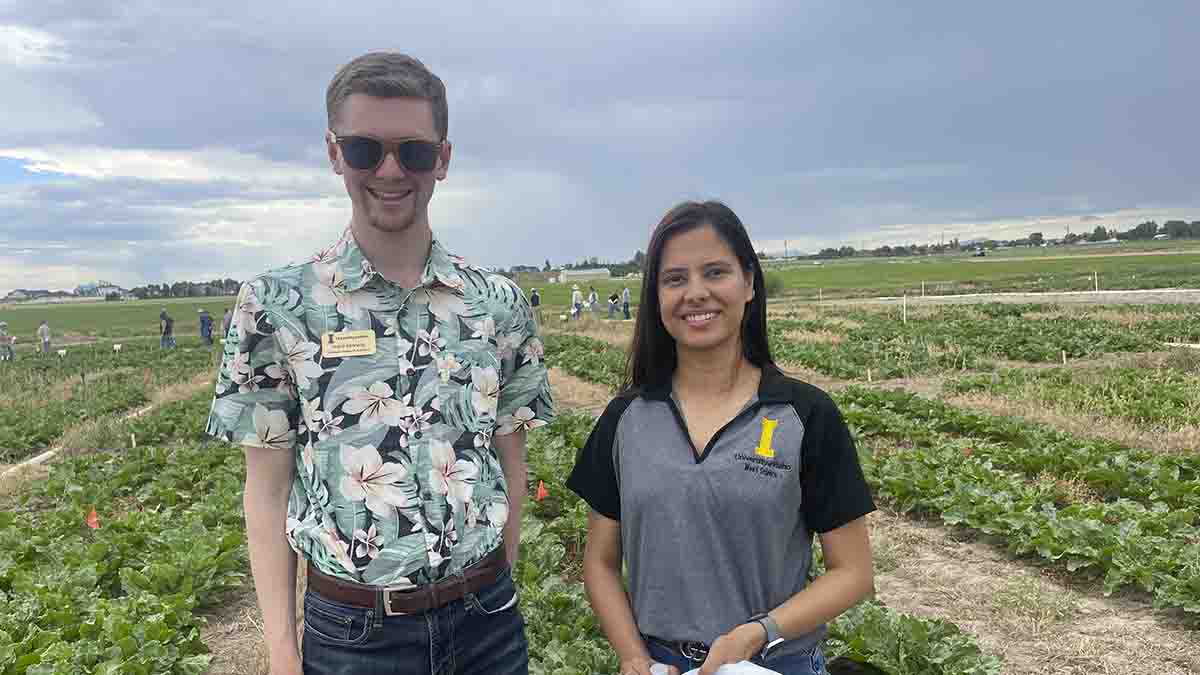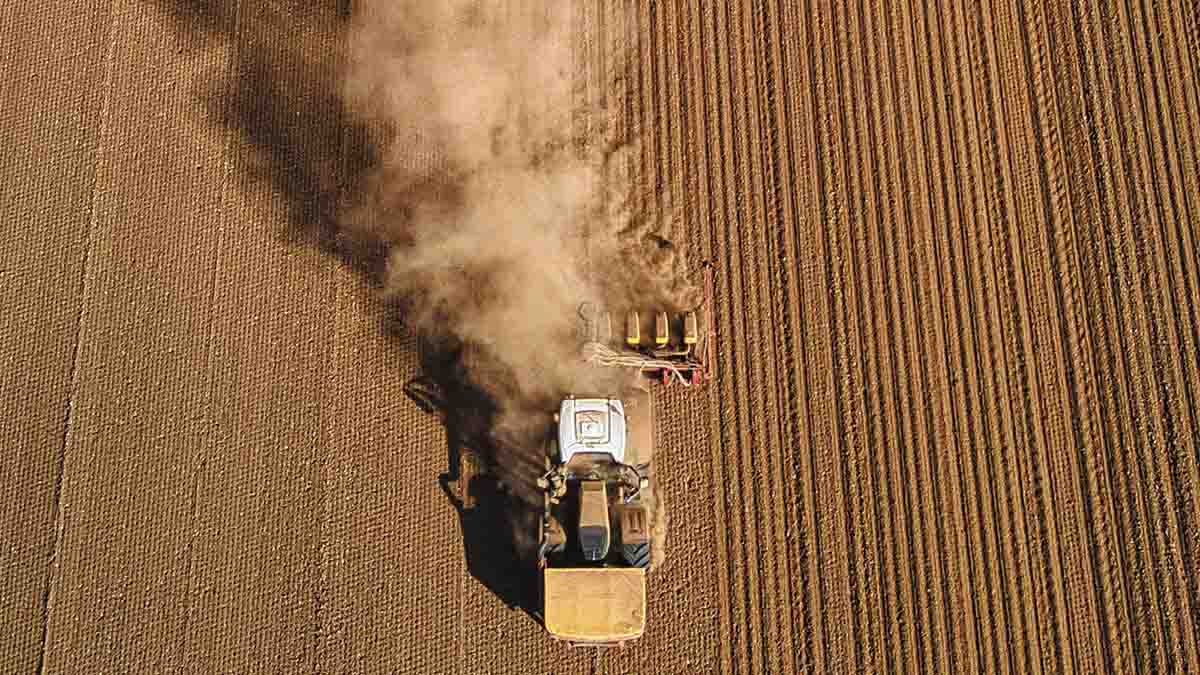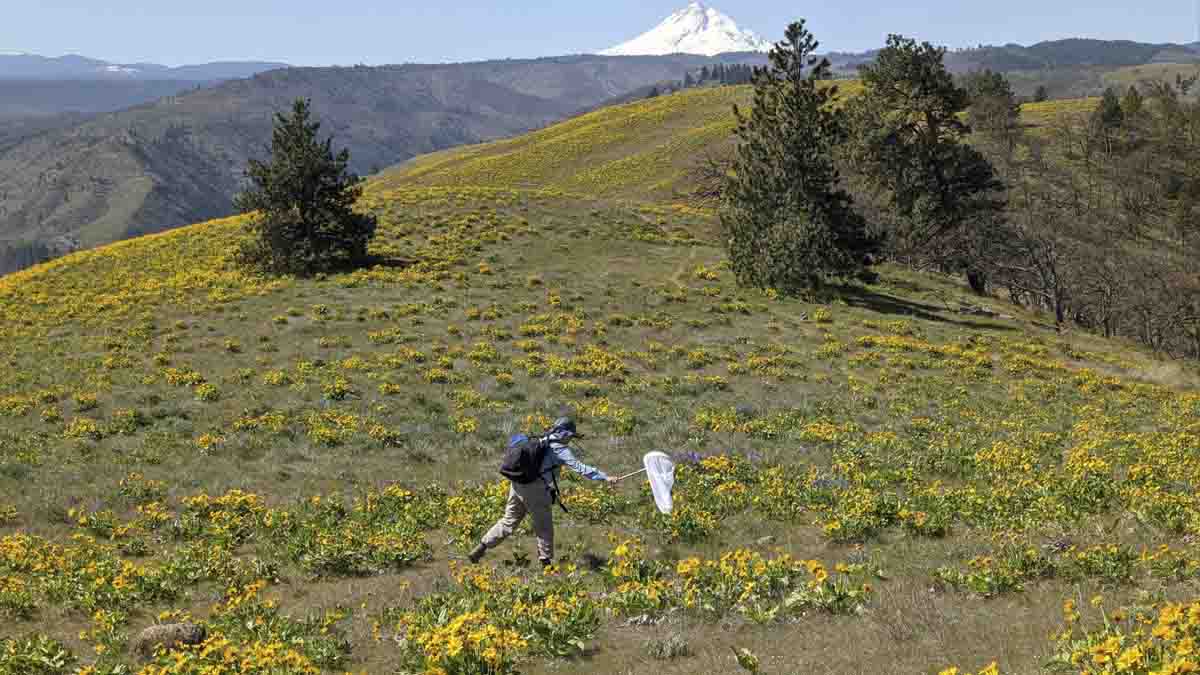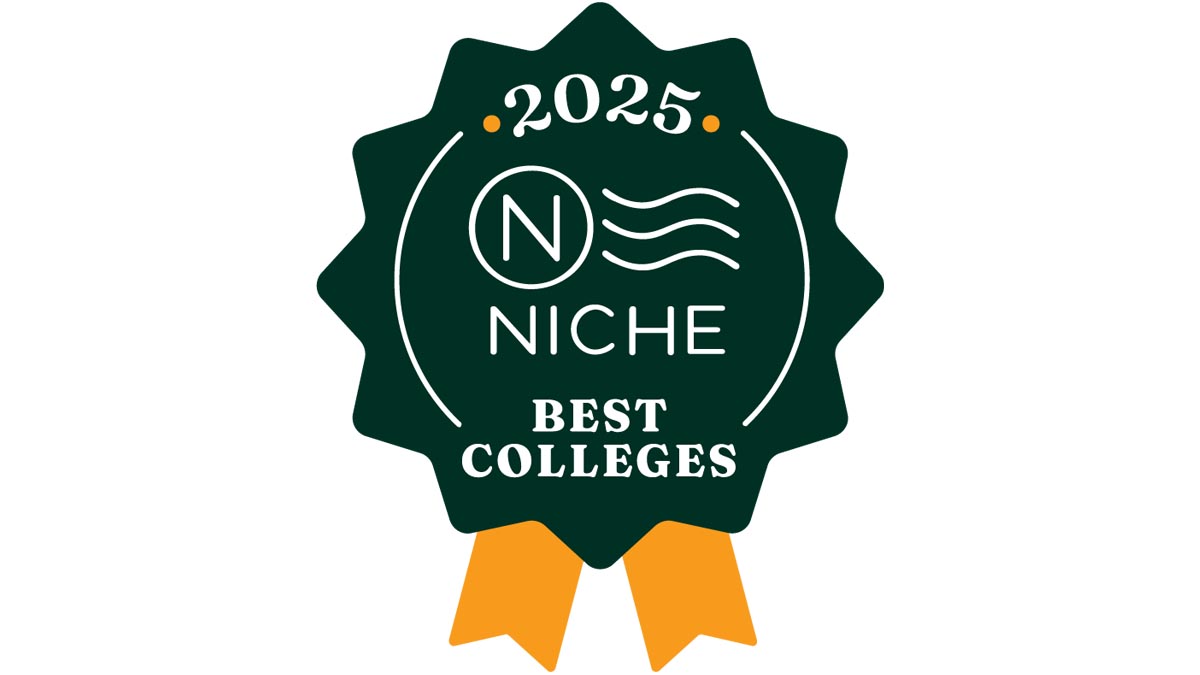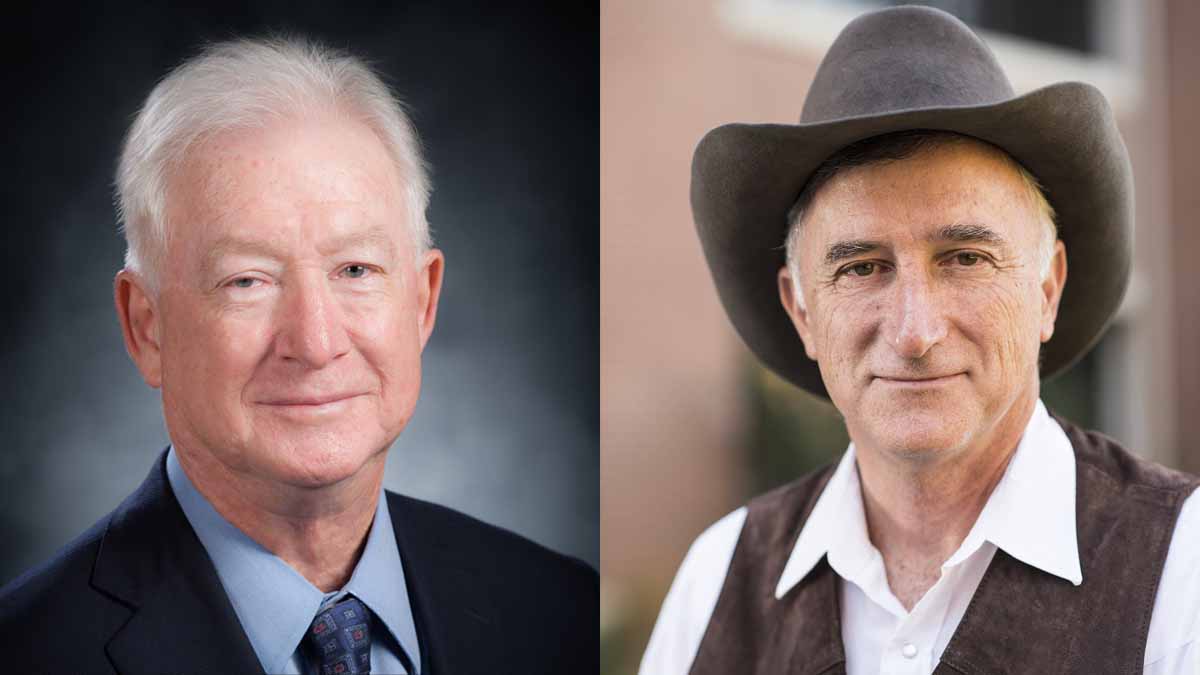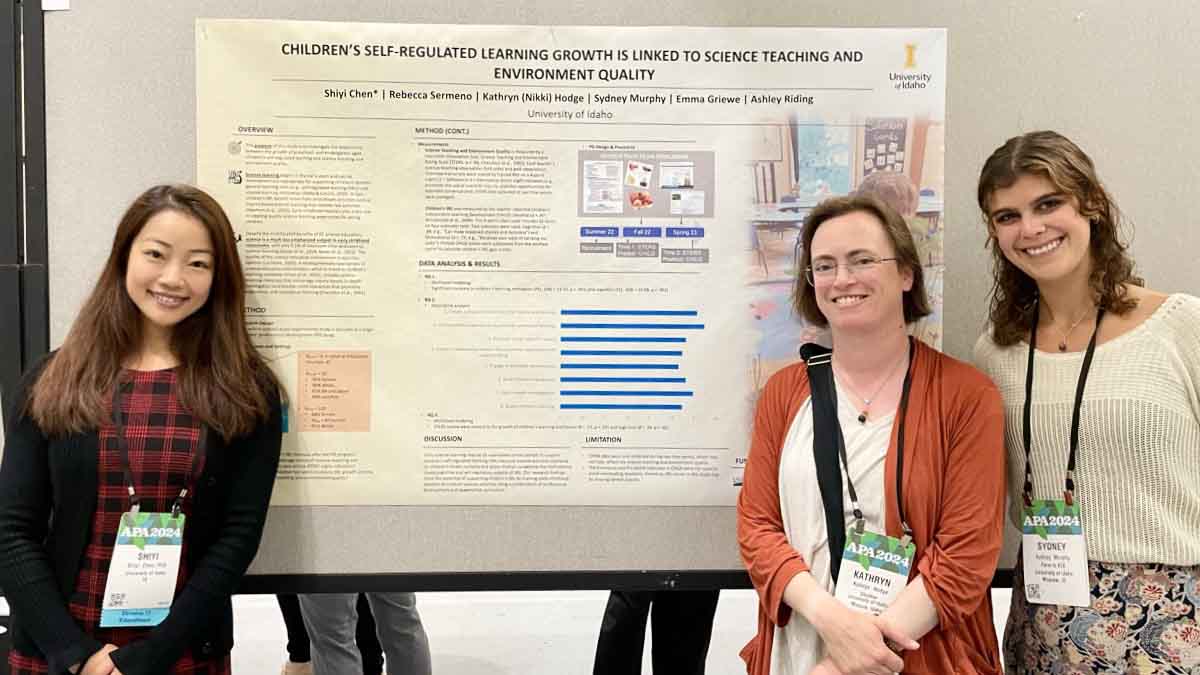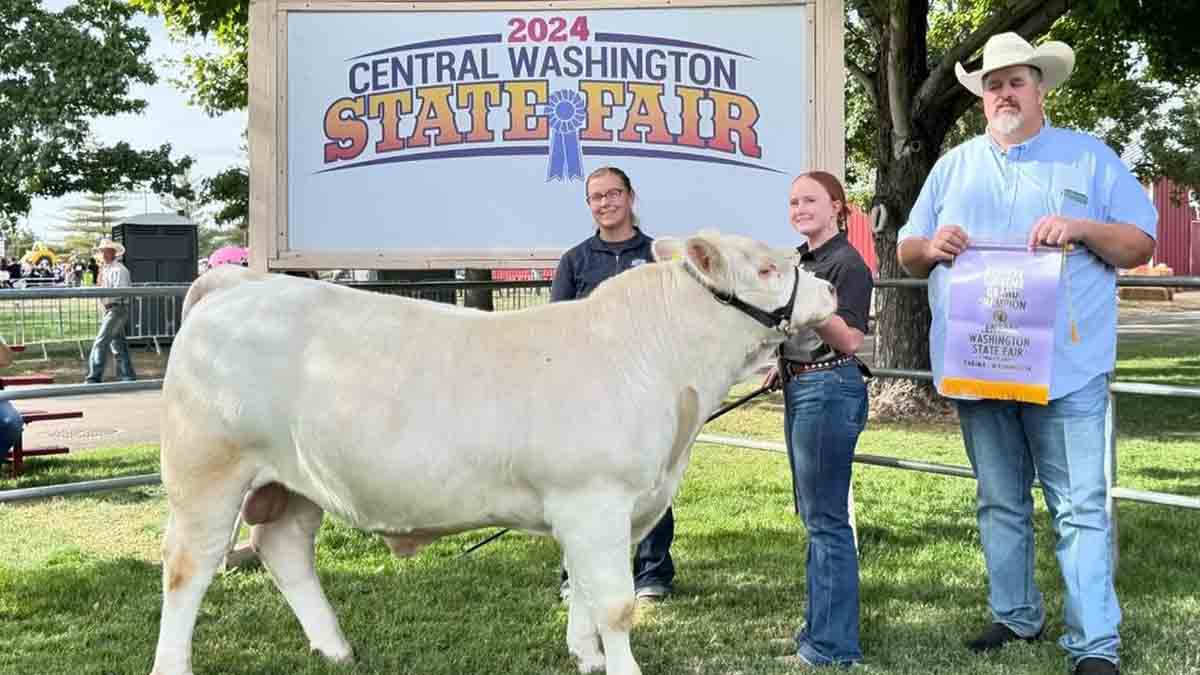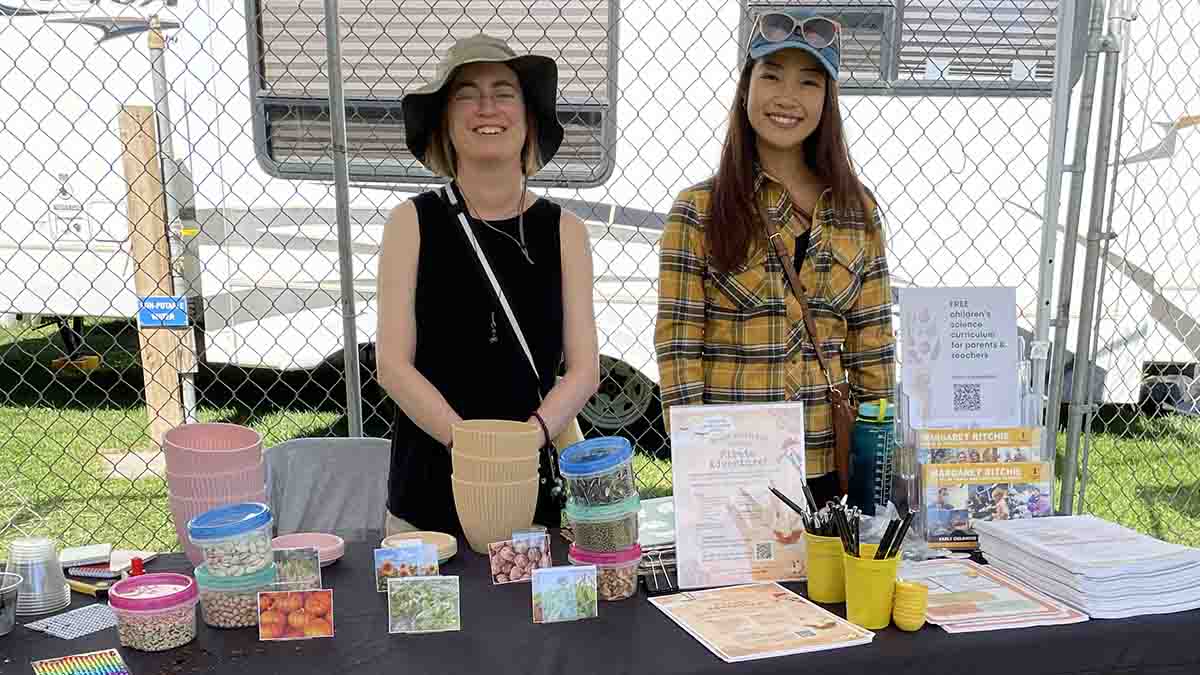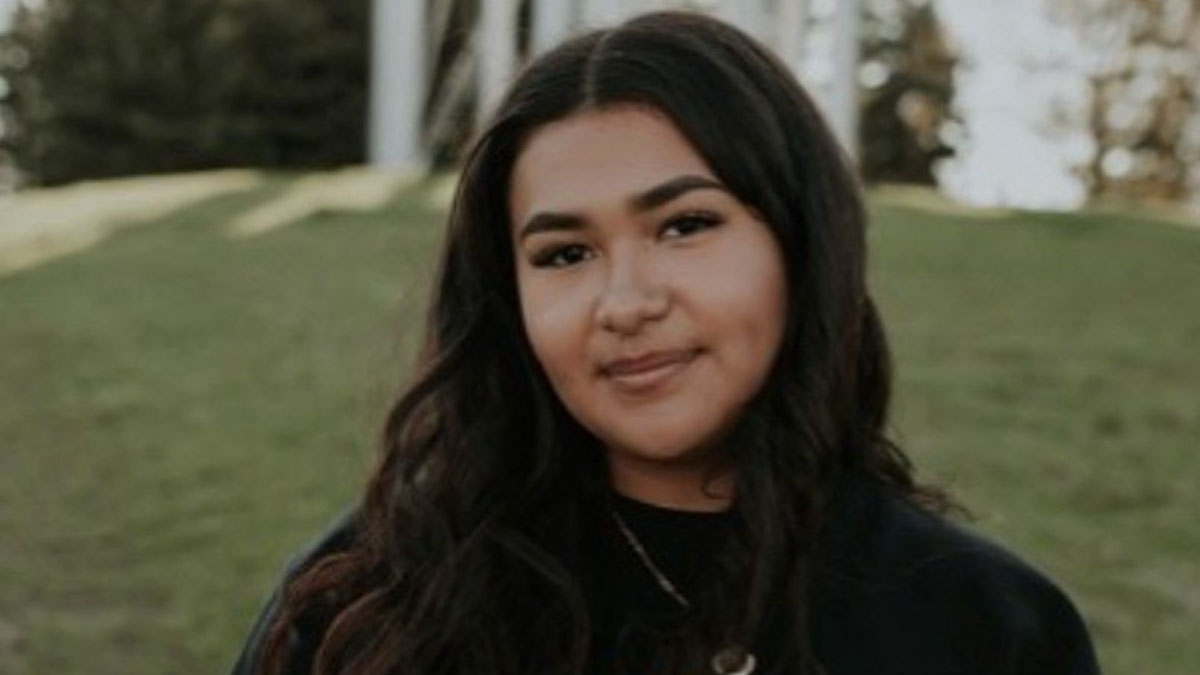Catching Up with CALS — Oct. 2, 2024
Dean's Message — Exceeding Expectations
During the first university-wide faculty meeting of this school year, I had the privilege of introducing 19 enthusiastic new faculty members who are ready to take the College of Agricultural and Life Sciences (CALS) to new heights. Of the 210 current CALS faculty members, we’ve hired 75 since I became dean in 2016. New faculty introductions have been an annual highlight of my calendar, and I’m always impressed by the enormous talent we continue to add. I make a point of encouraging these early career faculty not to settle for merely meeting expectations — rather, I urge them to strive to be among the university’s movers and shakers — delivering great undergraduate teaching and mentoring, publishing research, securing large grants, supporting graduate students, and bringing greater prestige to themselves, the U of I and CALS. We’ve made a lot of headlines in recent years for the many facilities our college has acquired, built, expanded and improved. Bricks and mortar, however, aren’t why I’m so optimistic about the future. State-of-the-art facilities are only as good as the faculty working there. I’m confident we’ll continue our upward trajectory because of our people — this includes our more recent hires and our strong foundation of mid- and later-career faculty. The primary value of new buildings is that they represent a carrot for recruiting and retaining world-class faculty, and they give our researchers better tools with which to succeed.
About eight years ago, our college recognized the need for grant writing assistance and grant management assistance and created two offices, setting the stage for our faculty to become far more competitive in pursuing extramural funding. The Office of Grant and Project Development, directed by Debbie Gray, is heavily involved in aiding faculty pursuing extremely large grants. CALS Grant Management Services, directed by Holly Waters, focuses on assistance to faculty applying for smaller grants, aiding in budget development and assisting in compliance with benchmarks once grants are secured. These two offices, which work closely together and lend guidance to most of the college’s grant submissions, are unique to CALS. They’ve helped the college double its grant applications and increase its annual extramural funding to about $40 million, compared with $17 million when the offices were first established. CALS had an especially big year in 2023, bringing in roughly $91 million in outside grants. U of I’s Office of Sponsored Programs is yet another resource to help CALS faculty bring in research dollars. Now is an especially busy time of year for grant writing, as faculty are responding to requests for proposals from USDA’s National Institute of Food and Agriculture (NIFA) and the Agriculture and Food Research Initiative (AFRI). “We have an amazing, talented group of faculty who are great to work with,” Waters said. “The teams play a dual role: supporting faculty in seeking funding to address issues that impact stakeholders and educating, preparing and training the next generation of future scientists and leaders.”
Through the culture we’ve created, we’re establishing true national centers of excellence in CALS covering a host of disciplines, often led by faculty who add substantial workloads to their already full plates. Here are a few recent examples of CALS faculty aiming high, landing large grants and establishing themselves and the college they represent as preeminent experts tackling some of the most important issues facing society:
- The Idaho Sustainable Agriculture Initiative for Dairy (ISAID), is a USDA Sustainable Agriculture Systems initiative, funded with $10 million over five years. The project aims to convert excess nutrients from dairy production in Idaho into valuable bioproducts, including commercial fertilizers and bioplastics. The principal investigator of the project, which is entering its final year, is Mark McGuire, a university distinguished professor within the Department of Animal, Veterinary and Food Sciences. The ISAID is an important part of the Center for Agriculture Food and the Environment (Idaho CAFE), the nation’s largest research dairy under construction in Minidoka county.
- Michael Strickland and Zachary Kayler, associate professors in the Department of Soil and Water Systems, are principal investigators of the Deep Soil Ecotron, which is funded with an $18.9 million National Science Foundation grant awarded in 2021 and will enable researchers to study soil at greater depths than anywhere else in the world. Researchers from throughout the globe are eager to collaborate with U of I on projects using the facility, based in the JW Martin Lab Building in Moscow. The facility will house 24 eco-units, which are 10-foot-deep columns containing soil cores with above-ground plants and below-ground organisms such as insects and microbes. Researchers will be able to manipulate a range of variables including temperature, water and exposure to carbon dioxide and other greenhouse gases. Data coming from this facility will lead to a better understanding of the deep soil in relation to plant health and the overall role that deep soil plays in ecoystems services.
- Sanford Eigenbrode, a distinguished professor in the Department of Entomology, Plant Pathology and Nematology, and Erin Brooks, a professor in the Department of Soil and Water Systems, are principal investigators of the largest grant ever awarded to U of I, called the Innovative Agriculture and Marketing Partnership for Idaho (IAMP). IAMP is a statewide project focused on reducing climate impact from the production of Idaho’s top commodities. It is funded with a $55 million U.S. Department of Agriculture (USDA) grant, of which $31 million will go directly to Idaho producers of potatoes, sugarbeets, wheat, hops, chickpeas, barley or beef who implement designated climate-smart practices.
- Michelle (Shelley) McGuire, professor of nutrition and director of the Margaret Ritchie School of Family and Consumer Sciences, received an $11 million grant through the National Institutes of Health to establish a Center of Biomedical Research Excellence (COBRE) at U of I focused on furthering studies on nutrition and women’s health. McGuire, a maternal-infant nutritionist with expertise in breastfeeding and lactation who was recently elected to the National Academy of Medicine, is project director and principal investigator of the COBRE in Nutrition and Women's Health, which will span five years and supports an array of training, mentoring, research and outreach activities. The COBRE will also establish a Nutrition Analytics Core Laboratory on the Moscow campus. McGuire and her team will be eligible to apply for two additional five-year phases of funding. Tenure-track faculty from any U of I college are currently eligible to apply for pilot projects to support research in nutrition and women's health. Applications for the pilot project grants are due on Dec. 16.
- Paul Lewin, associate professor and UI Extension specialist and director of the Rural Studies and the Digital Economy programs in the Department of Agricultural Economics and Rural Sociology, was recently awarded $700,000 from USDA’s National Institute of Food and Agriculture to establish the university’s first federally funded center as the new home of the Western Rural Development Center (WRDC), which is tasked with organizing research-based studies and educational outreach programs to address problems facing rural communities. Lewin relinquished his prior duties to serve as director of the WRDC, which is based in the U of I Boise offices on the second floor of the Idaho Water Center. The WRDC is one of four rural development centers throughout the country created by Congress’s passage of the Rural Development Act of 1972. The center serves 17 states and territories and 13 tribal colleges, so the impact will be felt far beyond Idaho.
Through projects such as these, we’re planting the seeds to elevate our research programs to national prominence. Our investments in facilities are paying dividends, making us far more attractive to elite faculty. We’ve also rolled out support services to help our faculty bring in grants at an unprecedented pace and grow their programs. This injection of extramural funding is further expanding our ability to invest in facilities, add graduate students and postdoctoral researchers and conduct cutting-edge science for the benefit of our stakeholders. The ball is rolling, and our momentum is growing exponentially.

Michael P. Parrella
Dean
College of Agricultural and Life Sciences
By the Numbers
University of Idaho’s Parma Research and Extension Center provides invaluable crop diagnostic services for Idaho farmers. As of Sept. 27, the total number of unique samples submitted for diagnosis to the Parma diagnostics lab in 2024 was: 596 potato samples, accounting for 25% of all samples, followed by cereals at 10% and beans at 6%. The lab conducted 87 different types of diagnostic tests. Additionally, the lab tested more than 1,473 spore trap samples from southern Idaho, as well as 21,598 individual polymerase chain reaction (PCR) tests from research, survey and diagnostic screening combined. The lab is led by James Woodhall, an associate professor and Extension specialist of plant pathology.
Our Stories

Controlling Weeds with Cover Crops
University of Idaho graduate student Adam Kennedy sees promise in using volunteer wheat as a cover crop to rid sugarbeet fields of herbicide-resistant weeds.
Similarly, U of I graduate student Prayusha Bhattarai has had success with planting three different cereal species as cover crops for weed control in dry beans.
Cover crops are a cornerstone of sustainable agriculture — planted primarily to improve soil health, prevent erosion and boost organic matter in soil, among a host of other agronomic benefits, rather than for commercial sale. Through their separate research trials, Kennedy, of Washington, and Bhattarai, of Nepal, aim to demonstrate yet another economically important benefit of raising cover crops — outcompeting troublesome weeds.
Some staple crops in Idaho such as sugarbeets, alfalfa and corn have been bred using biotechnology to withstand applications of glyphosate herbicide, sold under the trade name Roundup. Heavy use of glyphosate has led to the onset of herbicide resistance in kochia and other common weeds, making weed control far more challenging in Roundup-ready crops. Idaho sugarbeet farmers are especially concerned about the recent arrival of two pigweeds — Palmer amaranth and water hemp — that resist glyphosate and several other herbicides. The weeds were likely imported into Idaho from the South and Midwest in birdfeed and cottonseed meal used in livestock rations.
“We are very worried about controlling these resistant weeds. Relying solely on chemicals won’t be a sustainable way of managing these weeds,” Bhattarai said. “It is advisable to combine chemical management with other weed-control measures, and cover crops could be one of those measures because there are many benefits that farmers can get when they are using cover crops.”
Both students are working under advisor Albert Adjesiwor, a UI Extension specialist and assistant professor of weed science.
Bhattarai’s master’s thesis was funded with a $101,583 Idaho State Department of Agriculture specialty crop block grant through the Idaho Bean Commission, in addition to a $30,000 student grant through Western Sustainable Agriculture Research and Education. She conducted trials in 2023 and 2024 at both the U of I’s Kimberly Research and Extension Center and Parma Research and Extension Center, planting cover crops of barley, triticale or wheat in the fall and terminating them in the spring.
Her cereal cover crops were either harvested as forage, which would provide another commercial crop for farmers, or terminated with glyphosate herbicide. At the Parma site, the first forage cutting yielded 2,793 pounds per acre of triticale, 2,320 pounds per acre of wheat and 2,402 pounds per acres of barley. Bhattarai cut regrowth two weeks later just before she planted dry beans, harvesting another 528 pounds per acre of triticale, 778 pounds per acre of wheat and 1,019 pounds per acre of barley.
In plots in Parma where cover crops were planted without any supplemental herbicide applications, Bhattarai had up to 79% control of weeds and effectively suppressed glyphosate-resistant kochia. A cold spring disrupted cover crop growth in Kimberly during 2023.
Results from 2024 are not yet available, but Adjesiwor anticipates this season’s forage yields in Kimberly will be triple last year’s totals. In fact, this season’s Kimberly trials have yielded so much forage biomass, growth of the following bean crop was stymied, leading Adjesiwor to recommend that strip tillage be used in the future after swathing forage and before planting beans to improve bean seed contact with soil.
In other treatments in the experiment, Bhattarai used a combination of cover crops and herbicide applications to provide additional weed control. She’s also taken soil samples to evaluate how cover crops affected soil microorganisms and organic matter, and UI Extension economist Patrick Hatzenbuehler will help her conduct an economic analysis of cover crop use in her trials.
“This combination of cover crops and herbicides could be an amazing strategy for managing resistant weeds in dry beans,” Bhattarai said.
For his master’s thesis, Kennedy watered plots within a fall wheat field in Kimberly following harvest to raise a cover crop from the seeds that fell to the ground. The goal of his project is to help farmers cut costs of seed, fuel and other inputs by raising a volunteer cover crop. Watering volunteer wheat also saves time that would otherwise be spent preparing ground and planting cover crops.
“You don’t spend any money with volunteer wheat, but you get the same stand density as planting cover crops, and you also have much better biomass just because you get a head start,” Adjesiwor said.
Adjesiwor plans to use data from Kennedy’s experiment to apply for a USDA National Institute of Food and Agriculture grant next year.
In some treatments, Kennedy added collard greens and peas to the volunteer wheat to lend additional biomass. He plans to terminate his cover crops with herbicide in April and plant sugarbeets into the standing biomass. He intends to evaluate various combinations of cover crops with volunteer wheat and herbicide rates for weed control.
“The main problem is a lot of these weeds are Roundup resistant, and since sugarbeets are Roundup ready, that’s the go-to herbicide for weed control. You can’t blame anyone for doing that because Roundup is about the only effective herbicide option, but we all know that spraying more Roundup is going to create more resistance,” Kennedy said. “So are there alternative ways to reduce weeds?”
Though Kennedy has no official data yet, he’s been impressed by the blanket of thick foliage resulting from volunteer wheat alone, which he anticipates will result in effective weed control.
“Visually, it is a carpet of green grass out there,” Kennedy said. “I was surprised at how thick it was. It looks like the weeds are suppressed by the wheat and cover crop mixture, but it also looks like the wheat alone suppressed the weeds very well.”
Using cover crops to outcompete weeds, thereby reducing reliance on herbicides, would also help farmers comply with a new Endangered Species Act strategy the U.S. Environmental Protection Agency approved seeking to reduce herbicide use for the protection of more than 900 federally endangered and threatened species.
Adjesiwor said, “We know herbicide resistance is a numbers game. The fewer weeds you expose to an herbicide, the less likely you are to select for resistance.”

Ag Practices and Air Quality
A University of Idaho researcher is leading a multi-institutional study evaluating how the adoption of farming practices aimed at conserving water, reducing erosion and improving sustainability is affecting air quality.
Alex Maas, a U of I associate professor in the Agricultural Economics and Rural Sociology Department, was inspired to study the issue while wiping away dust from the front porch of his Moscow home, which made him think about the large, dusty plumes that trail harvesters working on the Palouse.
Maas will be analyzing hundreds of thousands of daily readings dating back more than two decades from networks of air-quality sensors west of the Mississippi River to determine how weather, farming practices, harvest timing and land-use factors unrelated to agriculture align to affect air quality and human health. He’ll be working with Jim Crooks, an associate professor and climate epidemiologist at National Jewish Health, and Colorado State University researchers Jude Bayham, an assistant professor of natural resource and environmental economics specializing in air quality and wildfires, and Jeffrey Pierce, a professor of atmospheric science.
Results of the study could guide future land-use decisions, help water managers prioritize methods for conserving dwindling irrigation supplies and justify program incentives for agricultural sustainability practices. Maas proved the concept of the project with a $200,000 seed grant from USDA’s National Institute of Food and Agriculture (NIFA) and received a four-year, $800,000 USDA-NIFA grant in July to broaden his research.
In states such as Colorado and California, irrigators have faced broad curtailments due to drought-related water shortages. As a result, many farmers have left more land fallow and shifted toward low-water crops. Irrigated farmland is also rapidly being lost to development.
“The goal is to see the unintended consequences of our land-use decisions broadly, and this does have a lot of implications as we’re trying to deal with this water-scarcity crisis out West,” Maas said. “We’re looking at all land because you need to control for highways and cities and places that create a lot of air pollution on their own, but we’re only trying to investigate changes in agricultural land.”
Farmers are increasingly taking a long-term approach to management and implementing sustainable farming practices to stretch their inputs and minimize their environmental impacts, such as no-till and reduced tillage, conversion to more efficient irrigation technologies and the planting of cover crops. Cover crops are planted primarily to reduce erosion and improve soil health rather than for commercial sale.
The continuing shift toward low-water crops driven by water shortages is also significant. For example, potatoes have different fertility and input requirements than dryland wheat, which could affect nutrients and chemicals entering the air.
Maas’ project will use sensor data from the U.S. Environmental Protection Agency’s air-quality network, as well as a private network called Purple Air. He and his colleagues have developed a creative method for analyzing the data. They’ll note the agronomic practices and land-use decisions occurring within a pie-shaped area upwind of each sensor associated with each daily reading. In aggregate, the data should inform them how air quality is affected by specific farming practices, as well as what to expect when farmers change those practices.
“These choices are all connected, and as we’re trying to conserve water and potentially changing these choices, how can we incentivize and disincentivize activities that have implications far beyond the borders of your operation?” Maas asked. “If we suddenly see no-till is having this big impact on what we’re picking up with these air-quality sensors, now let’s go and try to figure out what the actual mechanism is and how we can encourage that, or maybe come up with new technologies.”
The project, “Partnership: Evaluating Risks from Agriculturally Sourced Emissions of Particulate Matter,” is funded with a four-year, $800,000 grant from USDA-NIFA, of which 100% is the federal share, under award No. 2024-67024-42698.

Documenting Idaho’s Bees
University of Idaho Extension is working to build a program that will train volunteers to collect and identify bees, with the goal of establishing an atlas cataloging the rich diversity of bee species throughout the state.
Oregon State University Extension created the Master Melittologist Program in 2018, training citizen scientists to collect and curate specimens toward a broader goal of documenting the bees of the Pacific Northwest (PNW). UI Extension Educator Brad Stokes, of Canyon County, who specializes in horticulture and entomology, is collaborating with Andony Melathopoulos, an associate professor and pollinator health specialist with OSU Extension, to expand the program into the Gem State.
Stokes is pursuing funds to launch and sustain the program and has already begun building his base of volunteers.
Mellitology is the branch of entomology pertaining to the study of bees. Ten volunteers and four instructors — Stokes; Melathopoulos; Armando Falcon-Brindis, an entomology specialist at the U of I Parma Research and Extension Center; and Ron Bitner, an Idaho vintner and bee biologist who manages his vineyards for the benefit of pollinators — participated in an introductory training session hosted Sept. 12 at Deer Flat National Wildlife Refuge in Nampa.
Largely overlooked in the past, native bees are gaining recognition for their role in maintaining healthy ecosystems and pollinating agricultural crops. Pomology experts, for example, believe the native blue orchard bee will be more crucial for pollinating orchards in the future than domesticated honeybees.
“We’re figuring out that these native bee species are almost certainly better pollinators than Apis mellifera — the European honeybee,” Stokes said. “Idaho has such a diversity of crops — especially here in the Caldwell area where we have 140 different crops and a lot of seed crops — and we have a diversity of native bees that have been undocumented to date. We don’t even know what we have, and that’s a really important scientific question because you can’t protect something if you don’t know what species you have.”
The Master Melittologist Program trains volunteers to become naturalists who explore the landscape and collect bees, photographing any plants they discover supporting bees and placing bees associated with a common plant into the same jar. Volunteers who reach the program’s apprentice level can collect bees, prepare museum-quality specimen mounts and capture data in a scientifically robust manner. Volunteers who pass rigorous testing to reach the journey level are qualified to identify bees to the genus level. Their work is verified by a taxonomist. In both Idaho and Oregon, the program’s registration fee is $300.
OSU’s program has already produced more than 200,000 samples of native bees tied to associated plants, which is one of the world’s largest datasets of its kind. The program has identified 600 individual bee species, including dozens that were previously undocumented in Oregon. Melathopoulos anticipates some of them will eventually prove to be previously unknown bee species and will be assigned names. OSU has also developed a tool that draws from the database of bee species, their associated plants and the locations where they were found to provide site-specific guidance for landscape revegetation efforts.
The Washington State Department of Agriculture launched its own bee survey in 2023, also using Master Melittologist volunteers. The Washington Bee Atlas has since grown rapidly.
In 2020, Bitner and the College of Idaho received an $87,000 Specialty Crop Block Grant, provided by the U.S. Department of Agriculture and awarded through the Idaho State Department of Agriculture, to evaluate native bees in Treasure Valley specialty crop farm fields, employing a former Idaho middle-school teacher, Amy Dolan, to assist in the project. OSU later hired Dolan to train a small group of Idaho volunteers to begin work on cataloging specimens for an Idaho Bee Atlas. Dolan has since left the state, and partnering with UI Extension will bolster Idaho’s contributions toward cataloging the bees of PNW.
“We’re just in the perfect geographical location to find all of these species, and probably some that are yet to be documented,” Stokes said. “They might be closely associated with very rare flowers or plants, so their impact on the ecosystem might be extraordinarily important.”
The U.S. Fish and Wildlife Service has provided funding for the identification of bee species collected within National Wildlife Refuges in Idaho. Any bee specimens representing new species in Idaho counties or statewide will be added to the collection at the Orma J. Smith Museum of Natural History and the USDA Pollinating Insect Lab in Logan, Utah.
“The Great Basin has the highest bee diversity in the world, and Idaho sits at the crossroads of three major bee faunas,” Melathopoulos said. “All of the cool bees are in Idaho.”
For more information about the Idaho Master Melittologist Program, contact Brad Stokes at bstokes@uidaho.edu or 208-459-6003. Visit /master-melittologist to enroll directly.
Faces and Places
The College of Agricultural and Life Sciences has been ranked as the #13 Best College for Agricultural Sciences in America, up nine spots from last year and the top college in the northwest.
“Aquaculture Research,” which is a peer-reviewed academic journal on fisheries science and aquaculture, has established an annual award named for its founding editor-in-chief, Ronald W. Hardy, who is a distinguished professor emeritus in the Animal, Veterinary and Food Sciences Department and past director of U of I's Aquaculture Research Institute. The Ronald W. Hardy Award for Young Authors will be given out each year in August, starting in 2025, and will include a cash prize. The award will recognize early career authors and students across all fields covered by the journal. Qualifying research and authors will be promoted on the journal’s homepage.
Jim Sprinkle, Extension beef specialist, was a guest Sept. 27 on the Working Ranch Radio Show podcast, hosted by Justin Mills on Rural Radio, Sirius XM Channel 147. Episode 184 of the podcast featured Sprinkle’s research on the grazing behavior of cow/calf pairs on ruggest rangeland.
Shiyi Chen, an assistant professor of child development in the Margaret Ritchie School of Family and Consumer Sciences, and students Sydney Murphy and Nikki Hodge, presented their research on children’s self-regulated learning and early science education at the 2024 American Psychological Association annual conference in Seattle.
CALS student members of the Block and Bridle Club showed three calves, one heifer and two bulls at the Central Washington State Fair in Yakima, Washington, earning Grand Champion Charolais Bull & Reserve Champion Supreme, Reserve Champion Charolais Bull and Reserve Champion Charolais Heifer.
Assistant professor Shiyi Chen and CALS graduate student Nikki Hodge attended STEM Day at the Nez Perce County Fair where they led hands-on science activities.
The U of I Family, Career and Community Leaders of America (FCCLA) Chapter is collecting gently worn used or new shoes to be sent to microenterprise entrepreneurs in developing countries. Shoe collection boxes will be located in the Niccolls Building, room 103 and the Ag Biotech Courtyard until Dec. 1. Shoes can also be dropped off at any U of I research and extension center.
Evelyn Cervantes, of Moscow, who is studying child development and family relations in the Margaret Ritchie School of Family and Consumer Sciences and is an FCS Honor Society, Phi Upsilon Omicron member, received the Susan M. Rickards Scholarship from the Phi Upsilon Omicron Educational Foundation. Phi Upsilon Omicron is a national honor society recognizing and encouraging achieved excellence in scholarship, leadership and service for FCS students.






Events
- Oct. 4 — CALS Days, Moscow
- Oct. 7 — Remote Work Professional Certificate Course, Online
- Oct. 8 — CALS Networking Night, Moscow
- Tuesdays to Nov. 19 — Get the Dish: A Virtual Cooking Series, Online
- Oct. 8, 12, 22 — Idaho Home Garden Tips Class, Online
- Oct. 10 — Just Freeze It, Online
- Oct. 16 — Dementia Friends Information Session, Blackfoot
- Third Wed. monthly to April 16 — Heritage Orchard Conference, Online
- Oct. 17 — Power of Possibility (POP) Talks, Moscow
- Oct. 17 — Influencer Nutrition and What it Means for You, Moscow
- Oct. 24 — Girl Dinner: Unpacking What it Means for You, Moscow
- Oct. 24, Nov. 21 — Kids in the Kitchen Virtual Cooking Club, Online
- Oct. 25 — Babysitters Training, Caldwell
- Oct. 30 — Eating Well on Any Budget, Moscow
- Oct. 31, Nov. 7 & 14, Dec. 5 & 12 — Forestry Shortcourse, Sandpoint
- Nov. 4 — One Pot Budget Wonder: Make and Take an Easy Fall Meal, Moscow
- Nov. 6-8 — Heifer Development Workshop flyer (pdf) at locations: Cambridge 6th, Malad 7th; Salmon 8th
- Nov. 8 — Selkirk-Pend Oreille Food Summit, Sandpoint Organic Agriculture Center







